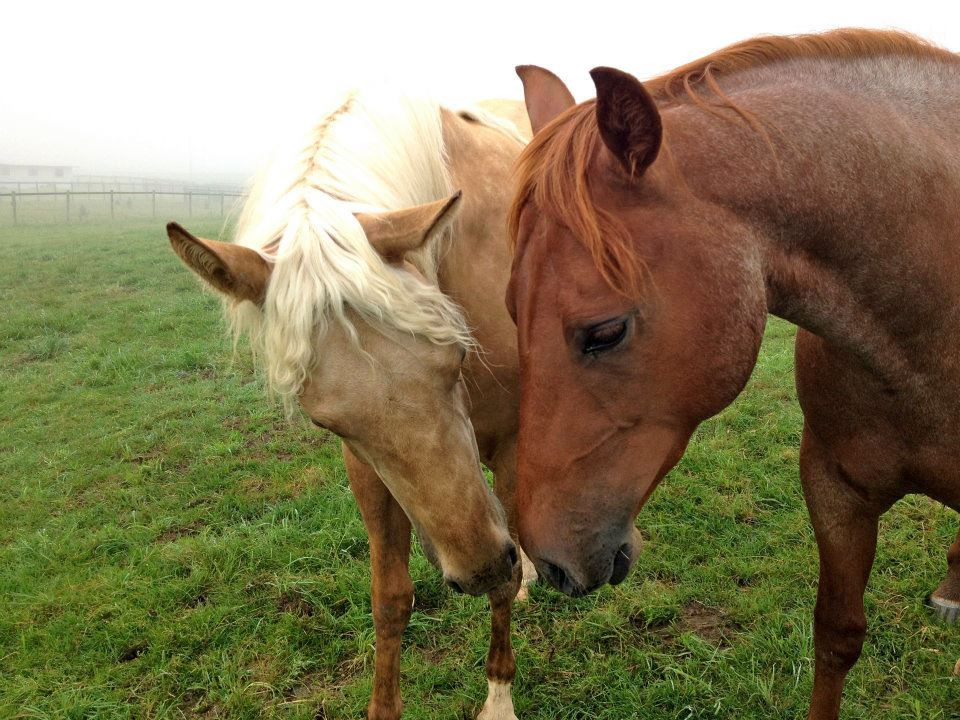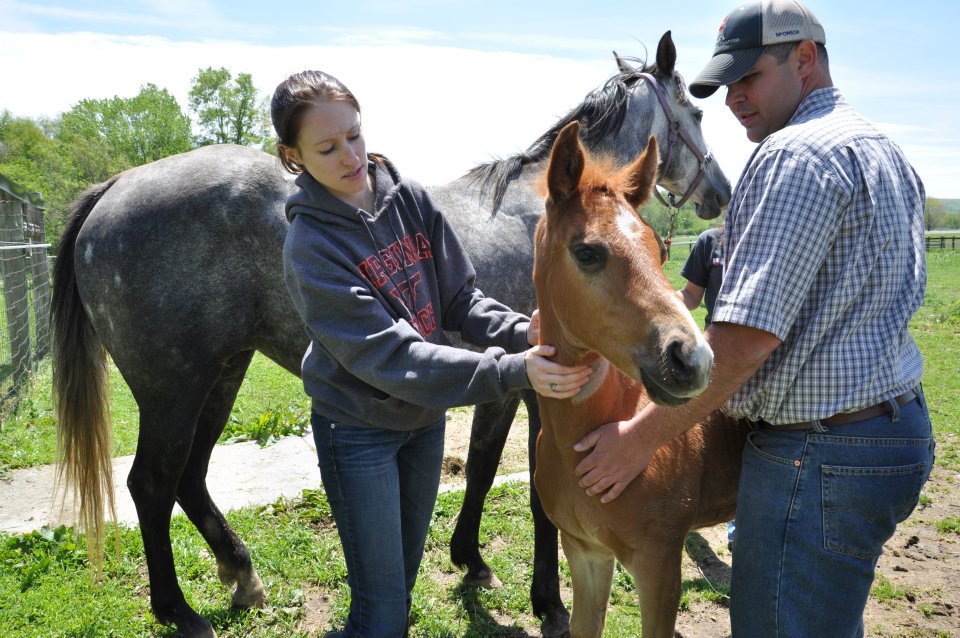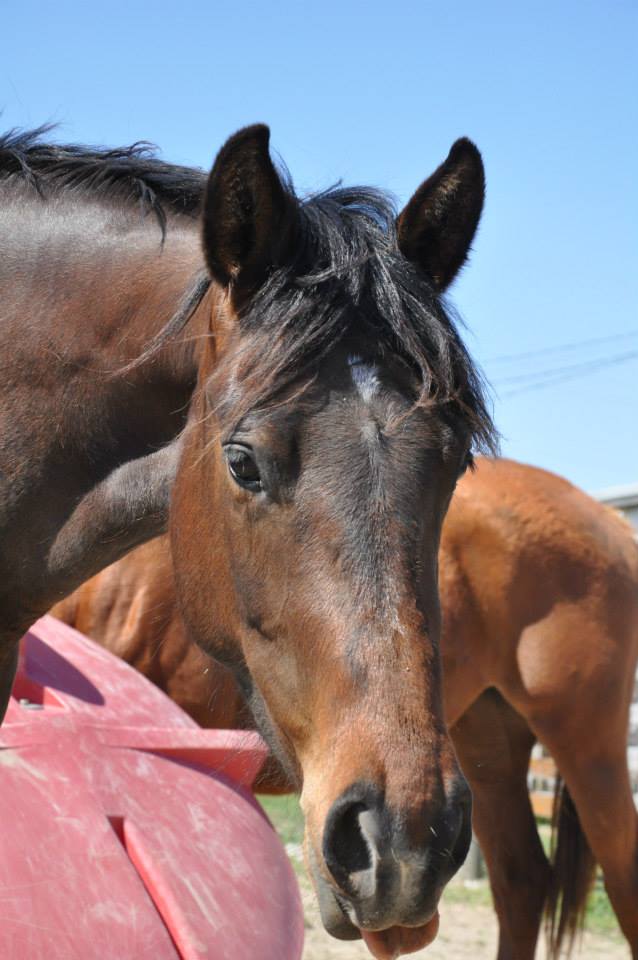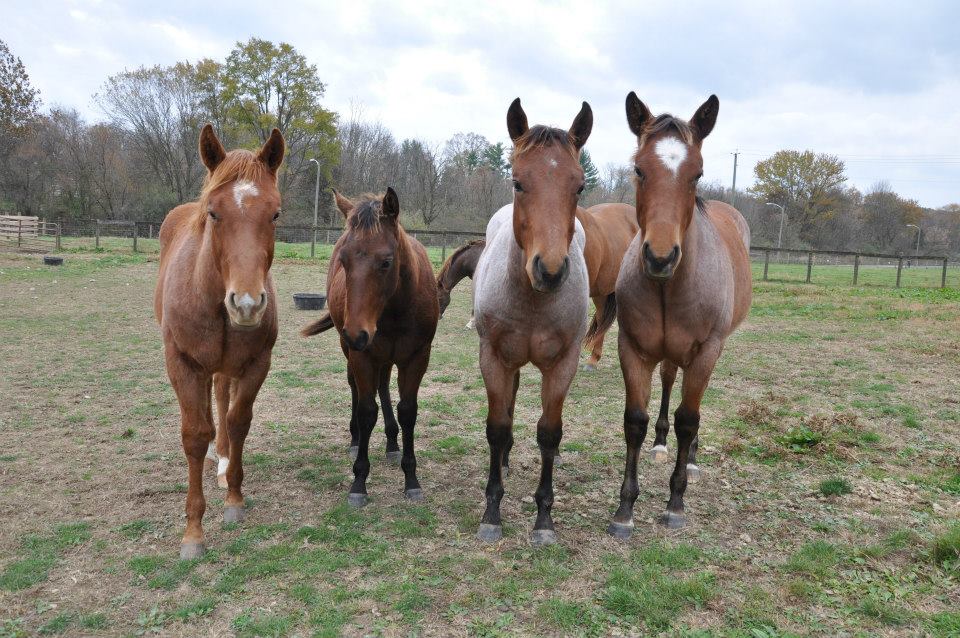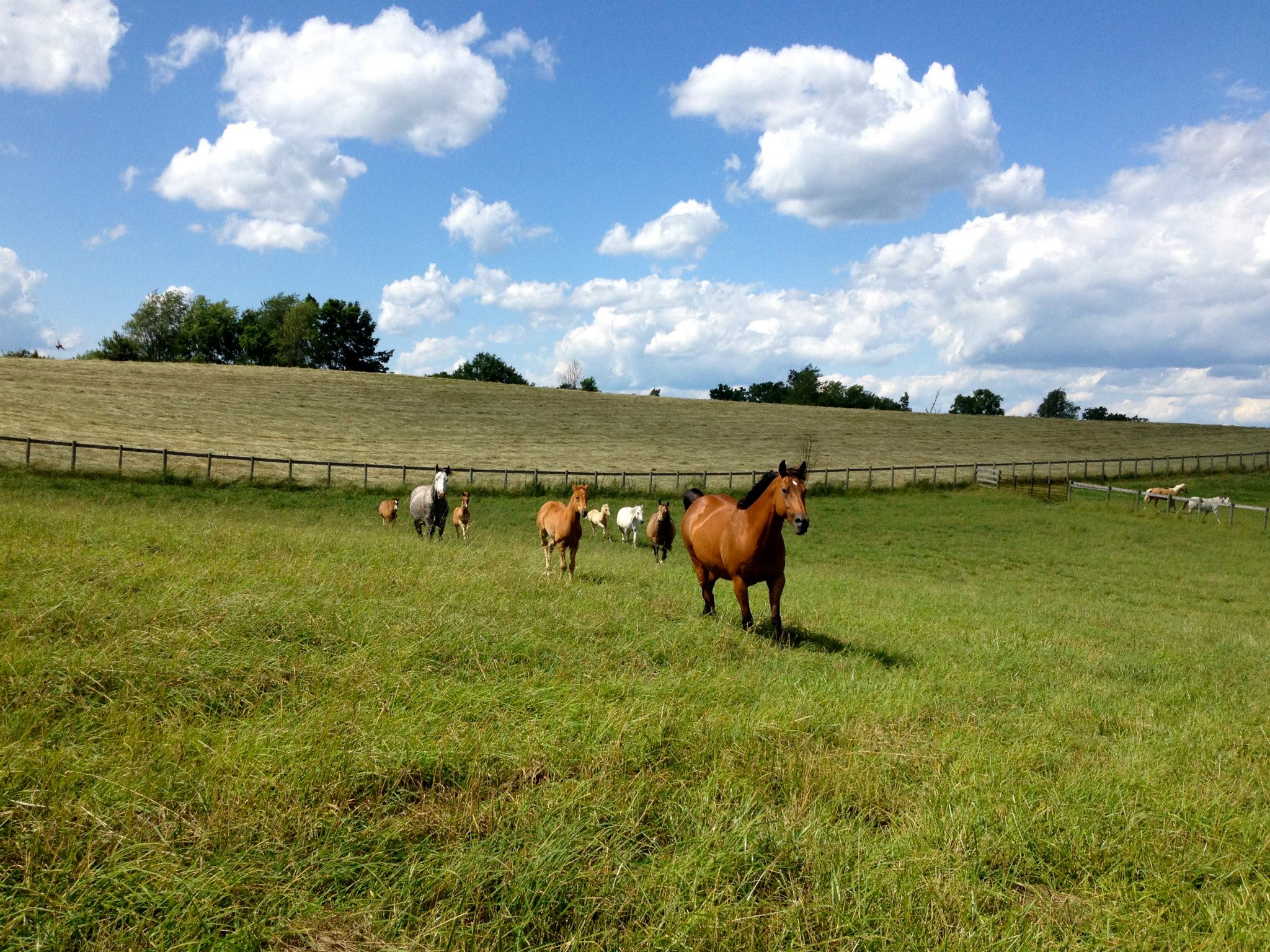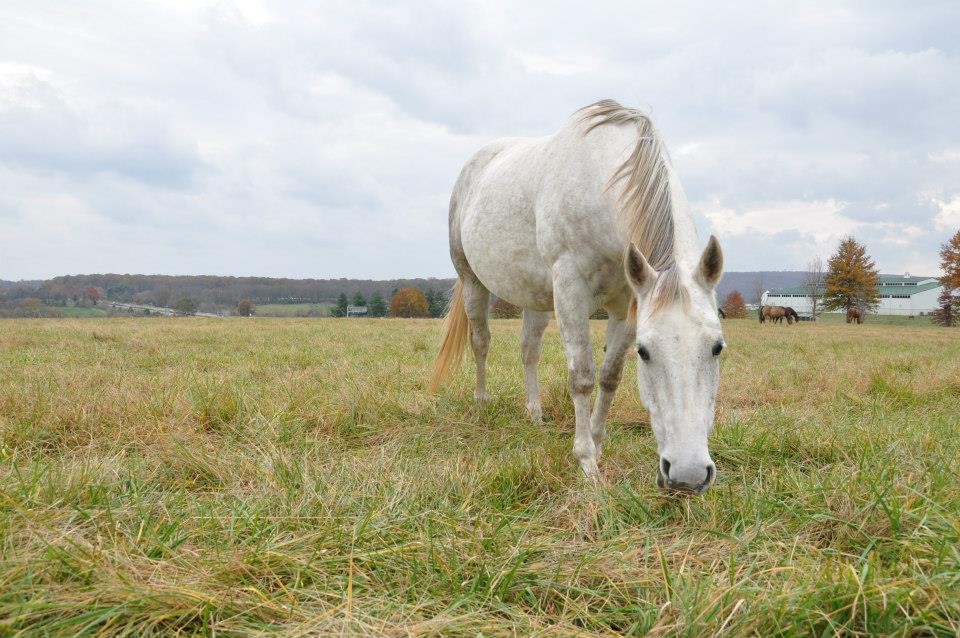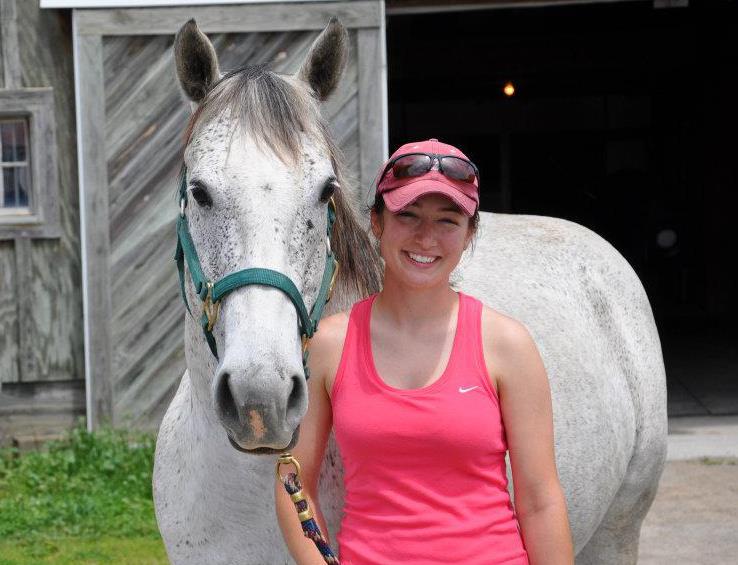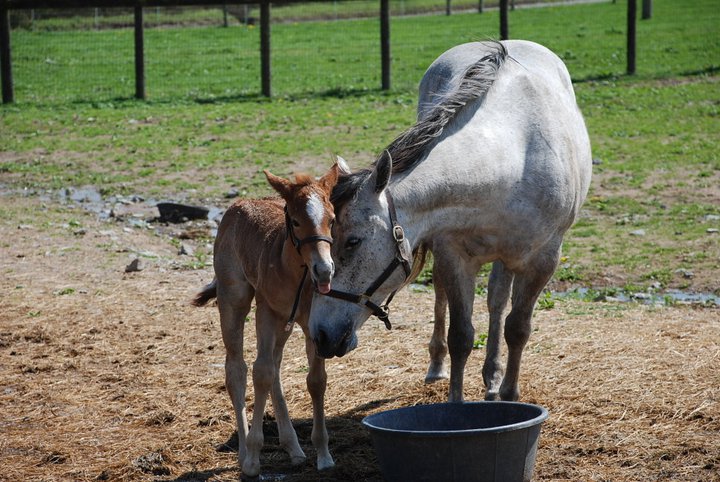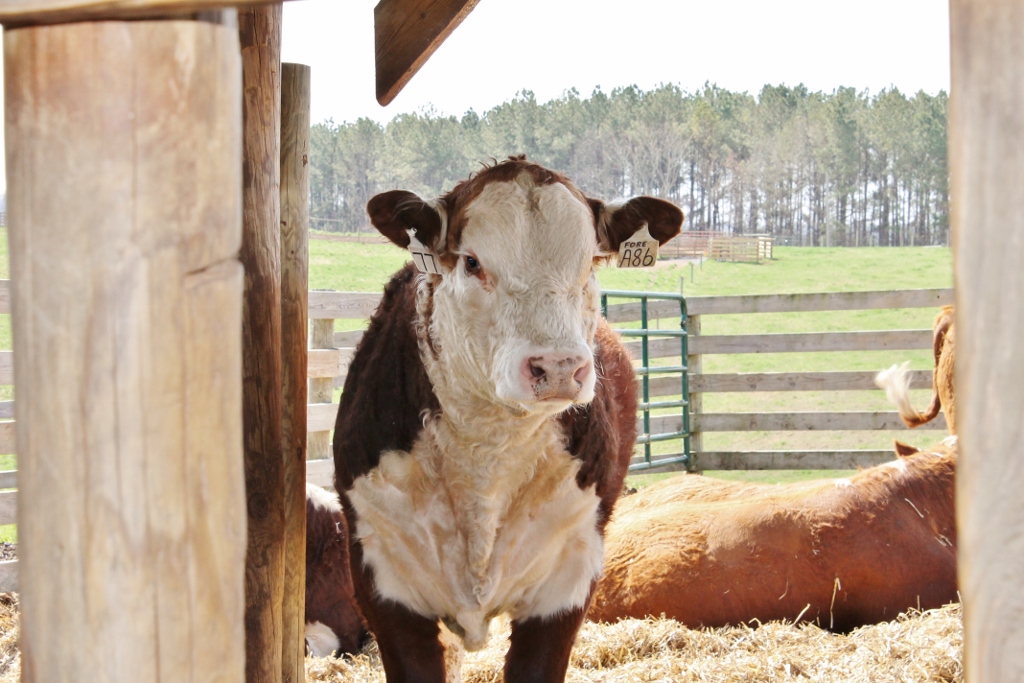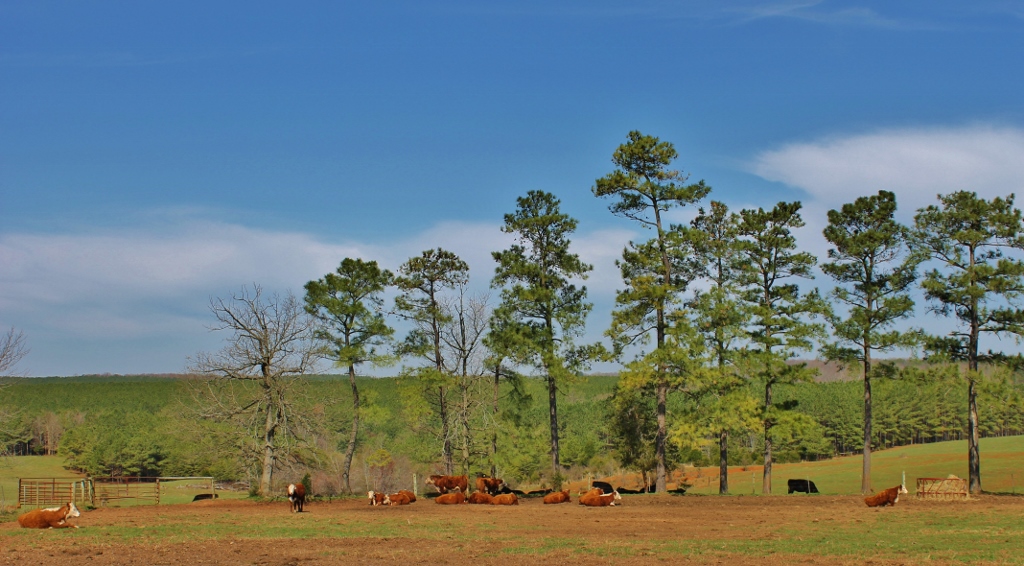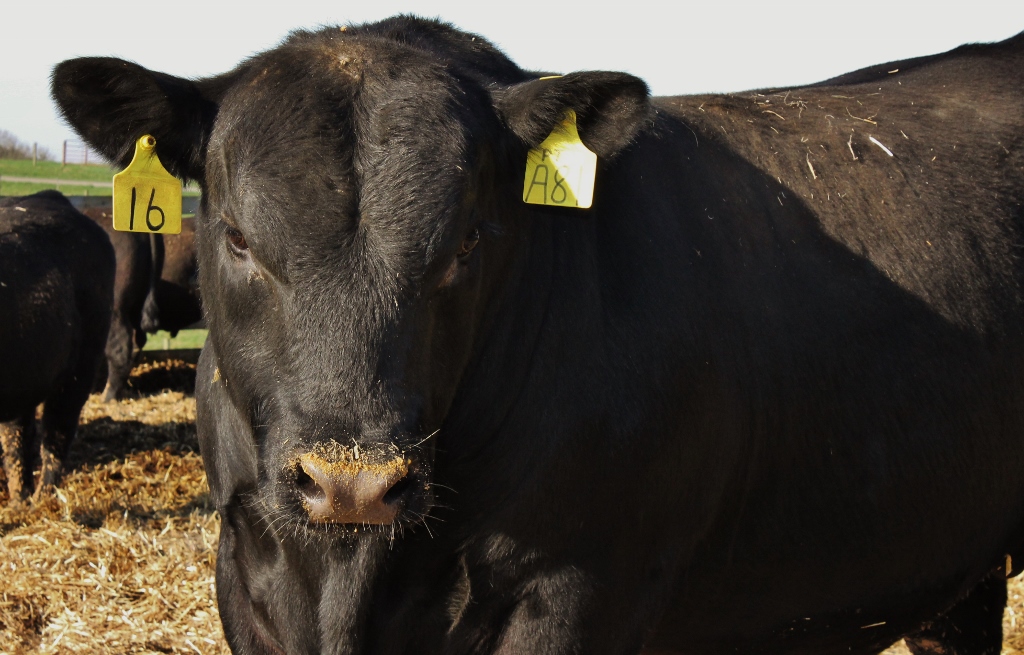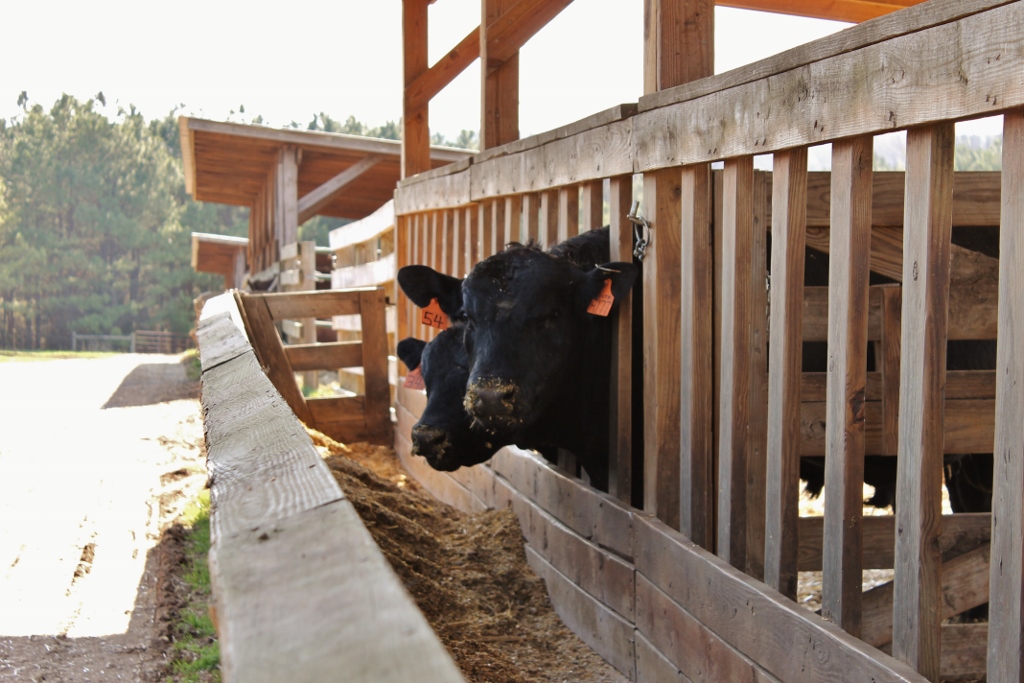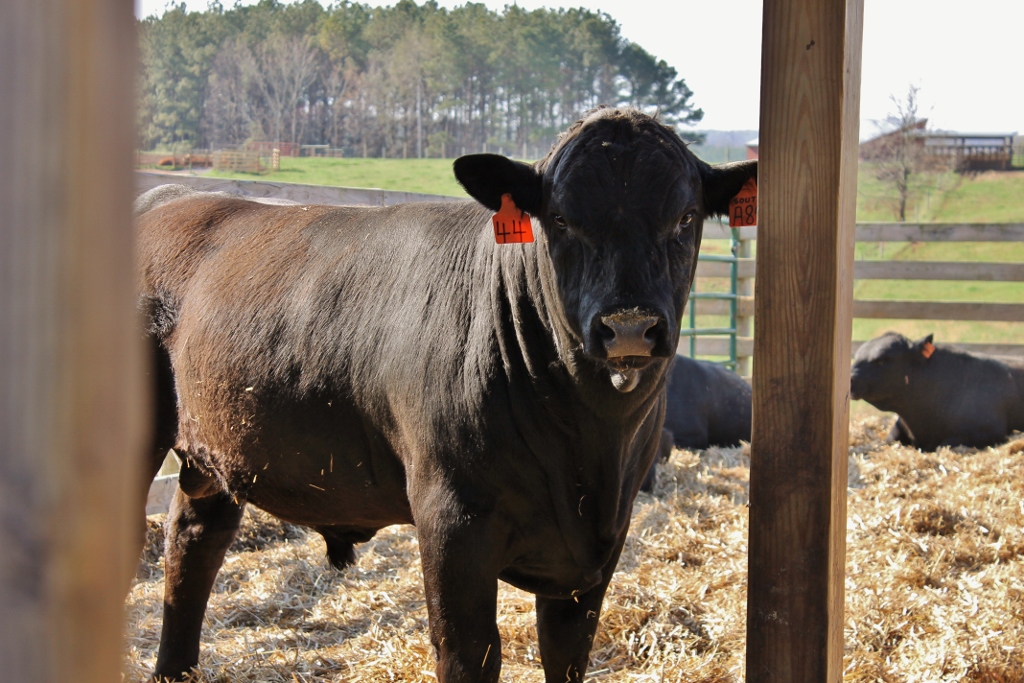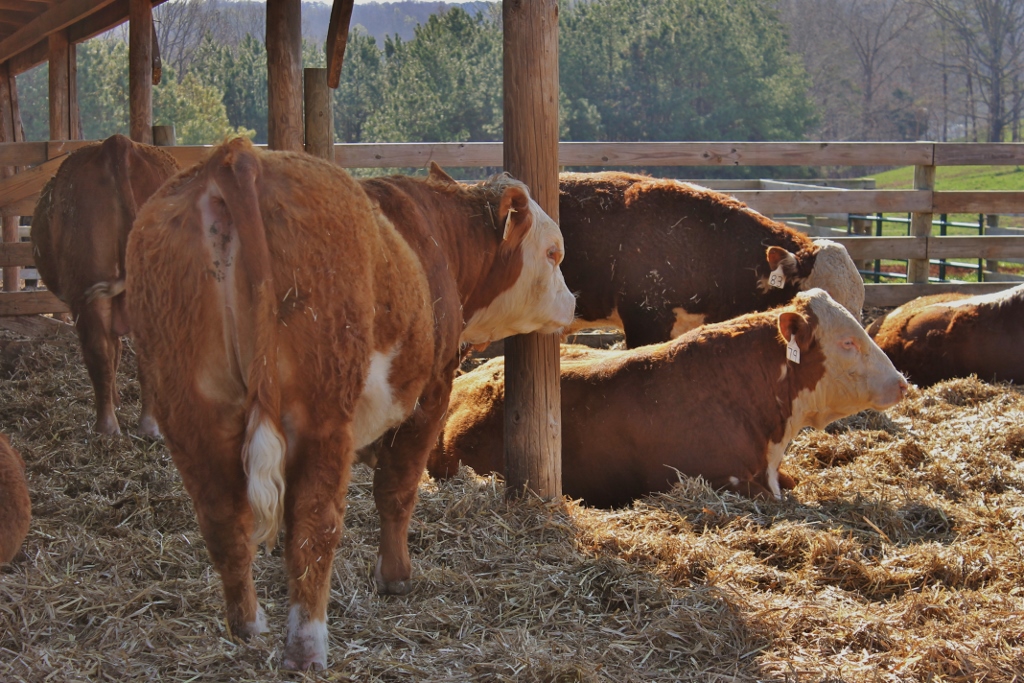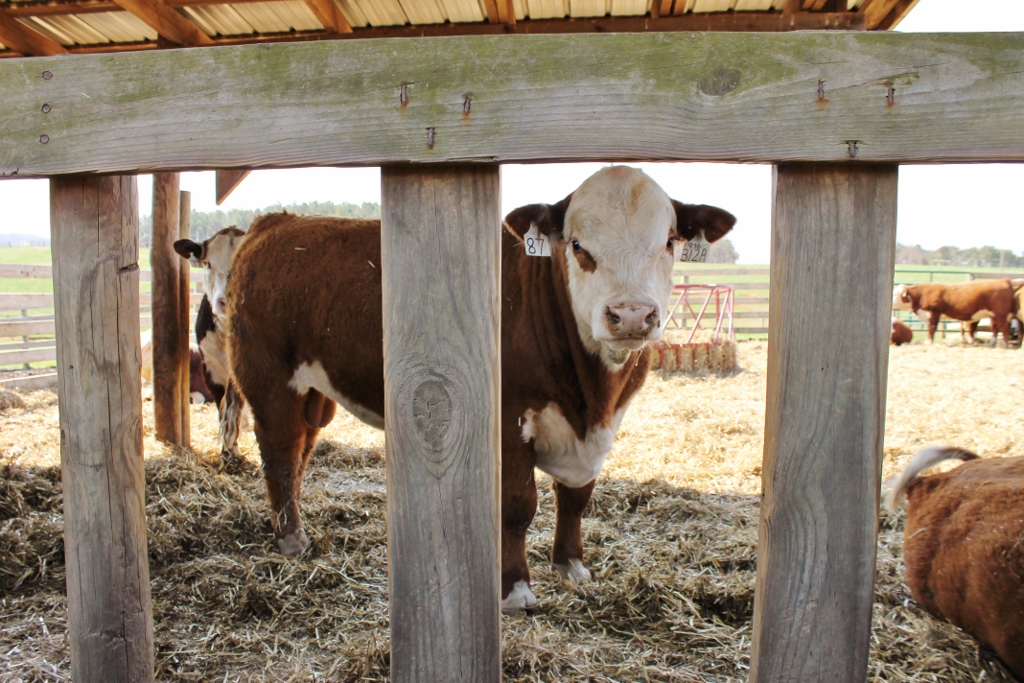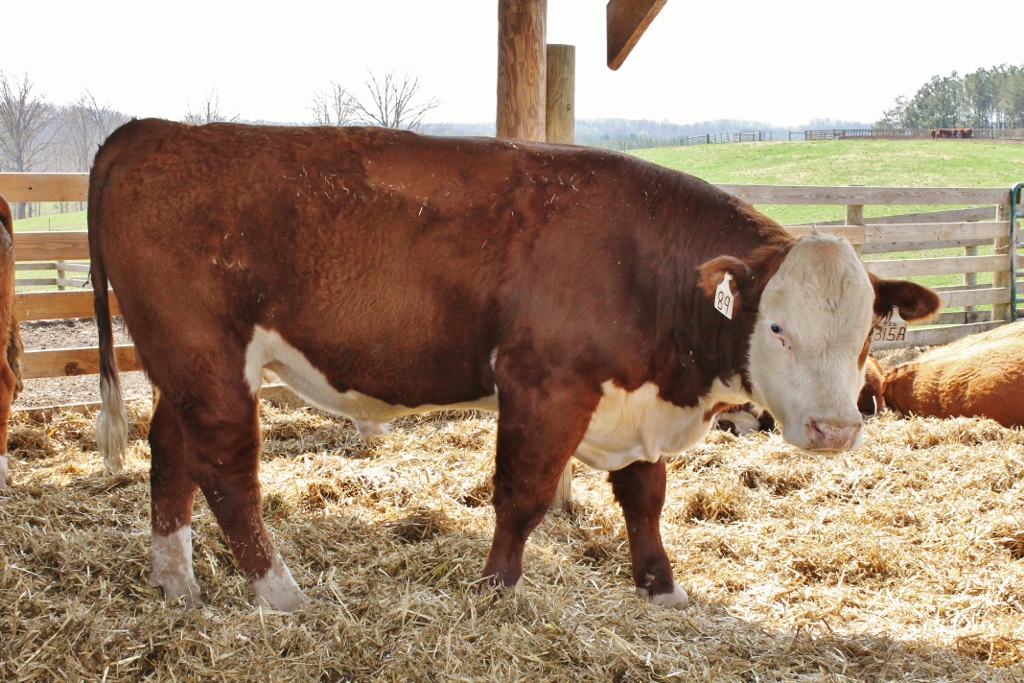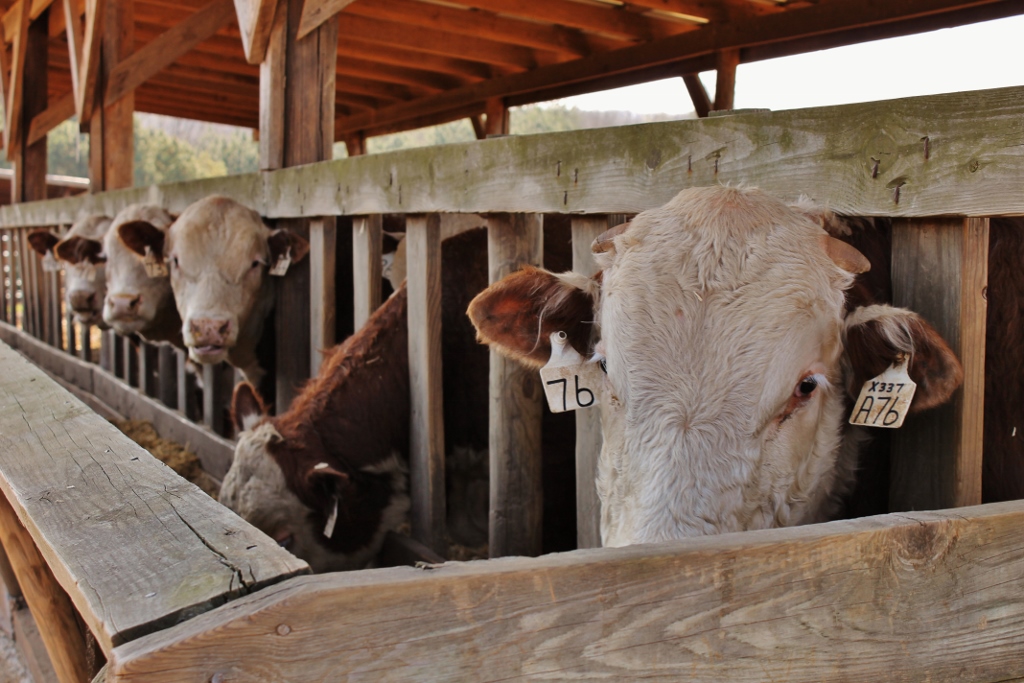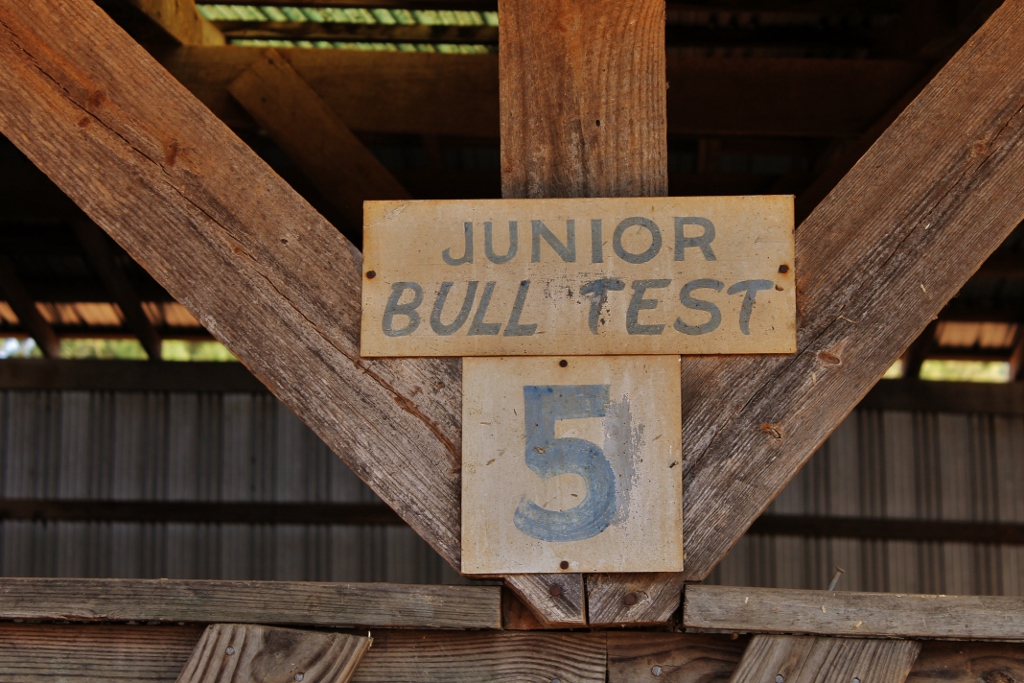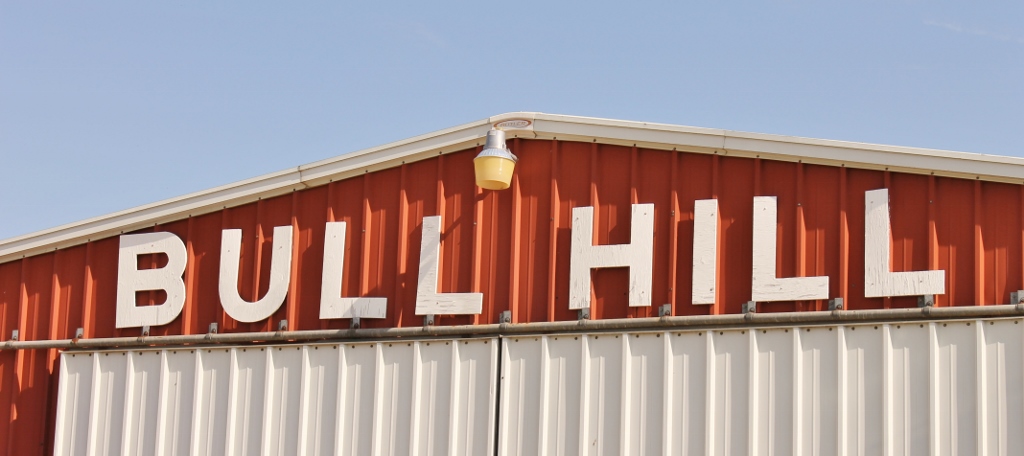A visit to the farm on a warm spring day affords joggers and passing cars the opportunity to see newborn foals napping in the grass while their dams graze nearby. The teaching and breeding facility, located on Smithfield Plantation Road, is about a mile away from Virginia Tech’s dorms and classrooms, allowing easy access for students and visitors alike.
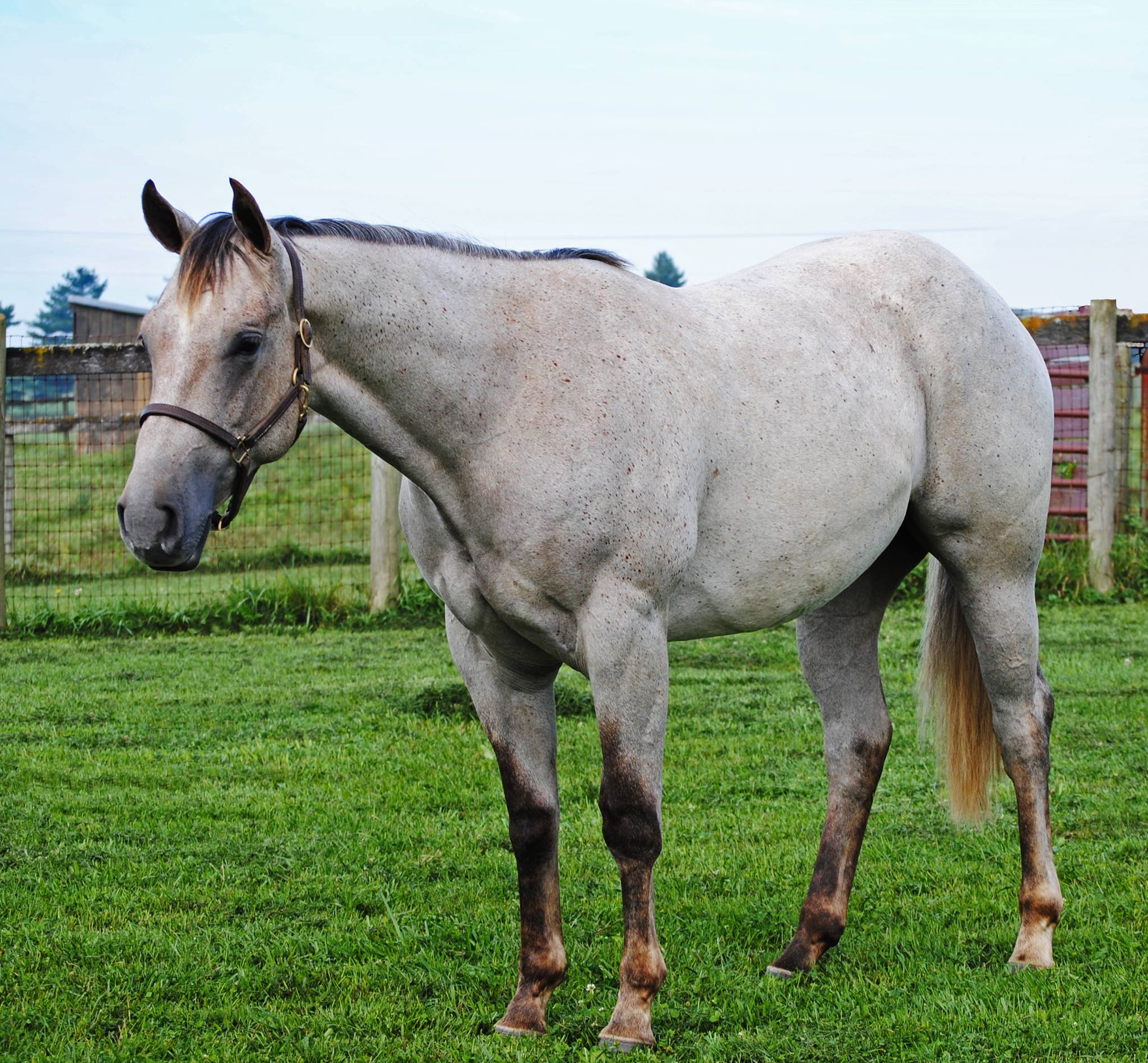 The property at Smithfield formerly housed Virginia Tech’s renowned sport horse breeding program which was moved several years ago to the 420-acre Middleburg Agricultural Research and Extension Center. Today, the Blacksburg facility is home to a herd of registered Quarter Horses, including broodmares, young stock, and breeding stallions. The Smithfield herd’s ancestry includes the likes of Smart Little Lena, Peppy San Badger, Peptoboonsmal, Freckles Playboy, and other famous cow horses. While many horses can be trained to work cattle, Quarter Horses—especially foundation-type Quarter Horses—have innate “cow-sense” coupled with abundant muscle and agility, enabling them to excel as performance horses in sports like cutting, roping, and reining.
The property at Smithfield formerly housed Virginia Tech’s renowned sport horse breeding program which was moved several years ago to the 420-acre Middleburg Agricultural Research and Extension Center. Today, the Blacksburg facility is home to a herd of registered Quarter Horses, including broodmares, young stock, and breeding stallions. The Smithfield herd’s ancestry includes the likes of Smart Little Lena, Peppy San Badger, Peptoboonsmal, Freckles Playboy, and other famous cow horses. While many horses can be trained to work cattle, Quarter Horses—especially foundation-type Quarter Horses—have innate “cow-sense” coupled with abundant muscle and agility, enabling them to excel as performance horses in sports like cutting, roping, and reining.
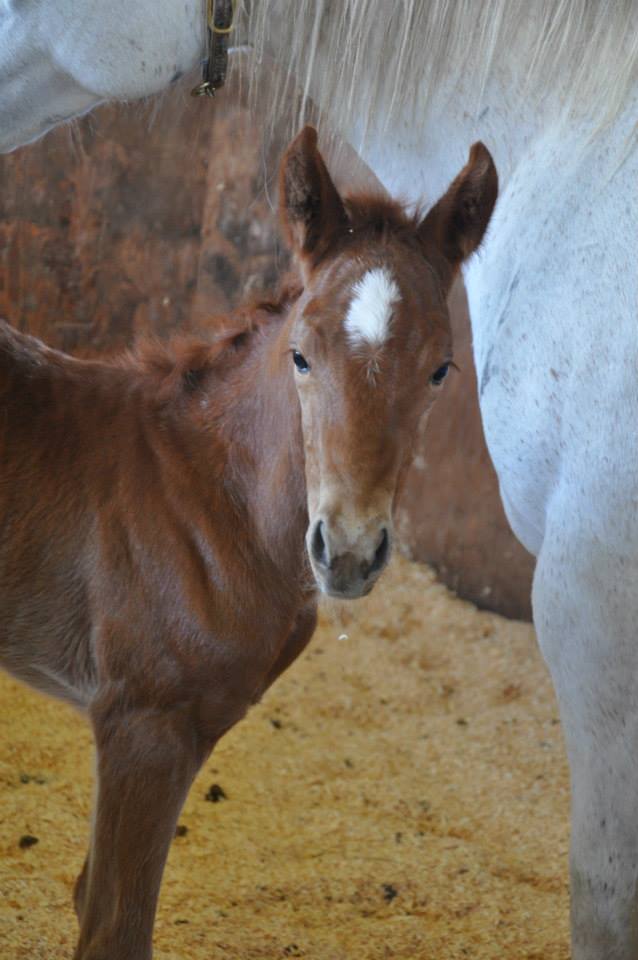 Because mares cycle during the warm season, the Smithfield broodmares are bred in the spring to one of the stallions available at the farm. They foal the following spring after eleven months of pregnancy. This year, eleven foals are expected and several have already made an appearance. The foals are kept on pasture with their dams, or mothers, for four to five months before they are weaned. Throughout this period, they are acclimated to human interaction and learn to be groomed and led. As they grow and mature, they learn how to walk onto a trailer, stand still while tied, stand for bathing, exercise in a round pen, ground drive, carry a saddle and bridle, and other skills that set a foundation for later training.
Because mares cycle during the warm season, the Smithfield broodmares are bred in the spring to one of the stallions available at the farm. They foal the following spring after eleven months of pregnancy. This year, eleven foals are expected and several have already made an appearance. The foals are kept on pasture with their dams, or mothers, for four to five months before they are weaned. Throughout this period, they are acclimated to human interaction and learn to be groomed and led. As they grow and mature, they learn how to walk onto a trailer, stand still while tied, stand for bathing, exercise in a round pen, ground drive, carry a saddle and bridle, and other skills that set a foundation for later training.
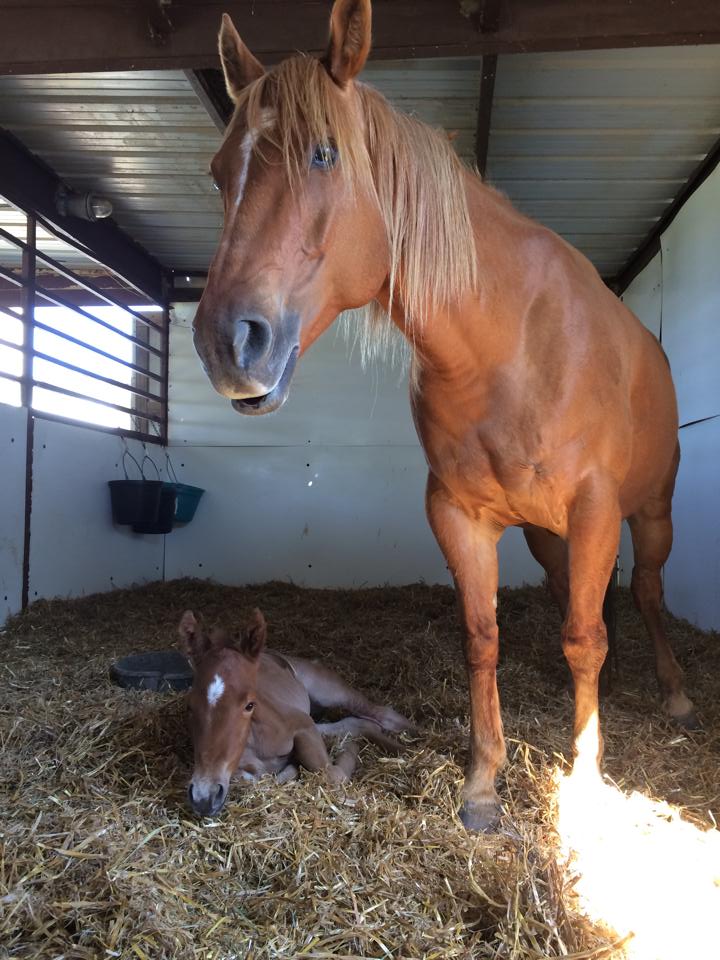
Mares are pregnant for eleven months. They are brought into a large foaling stall close to the time they are expected give birth so that both mare and foal can be monitored. In many cases, foals will stand up and nurse within about an hour of birth.
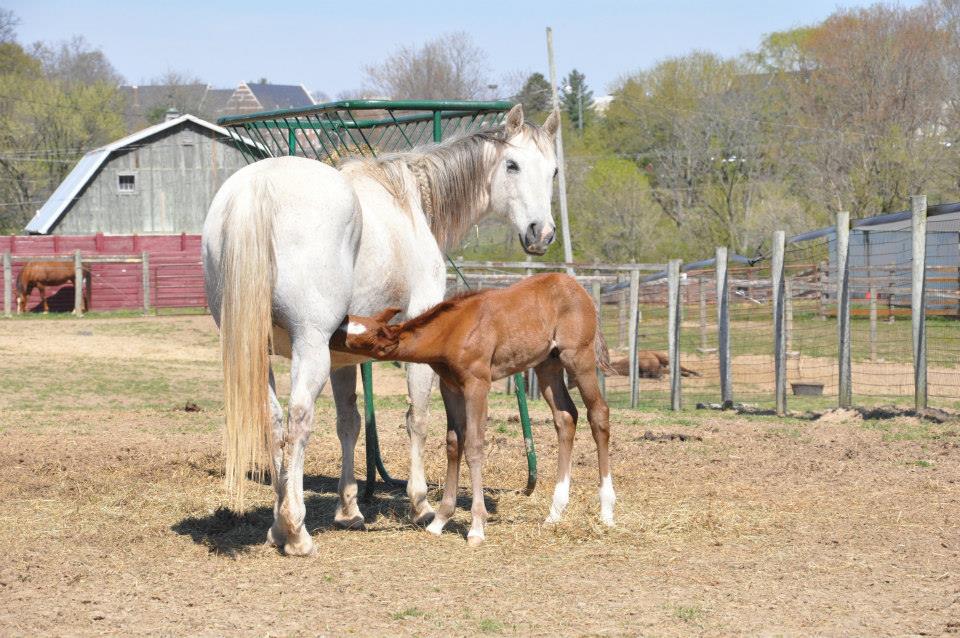
Mares nurse their foals for several months before the foals are weaned. Even while they are still nursing, foals begin to learn to graze and eat grain, enabling them to become independent at weaning time.
While Smithfield Horse Center strives to provide the horse industry with high-quality animals, it also provides excellent opportunities for students to learn valuable skills as part of a degree tailored to their interests in Equine Science. Students in a basic equine management class visit the center to practice horse handling, treatment, and care. A more advanced course in equine production enables students to watch a mare through her pregnancy, monitor her as she foals, and care for the newborn foal as it grows. Students in the undergraduate Animal Science program can apply each semester to volunteer extracurricular hours at Smithfield where they work with the farm staff to handle, train, and care for the Smithfield herd. Will Golden, the center’s manager, oversees daily operations and the breeding program.
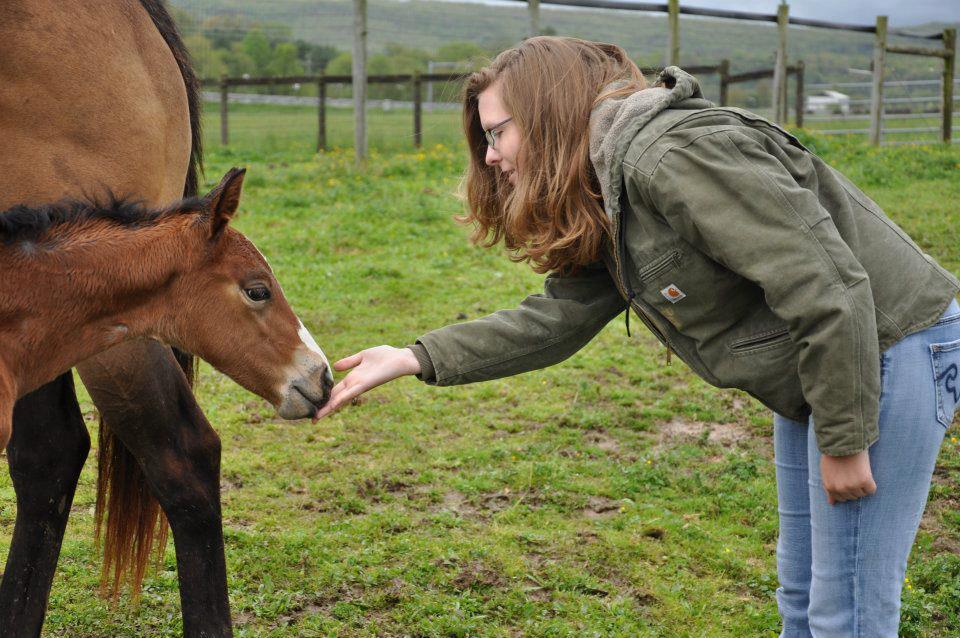
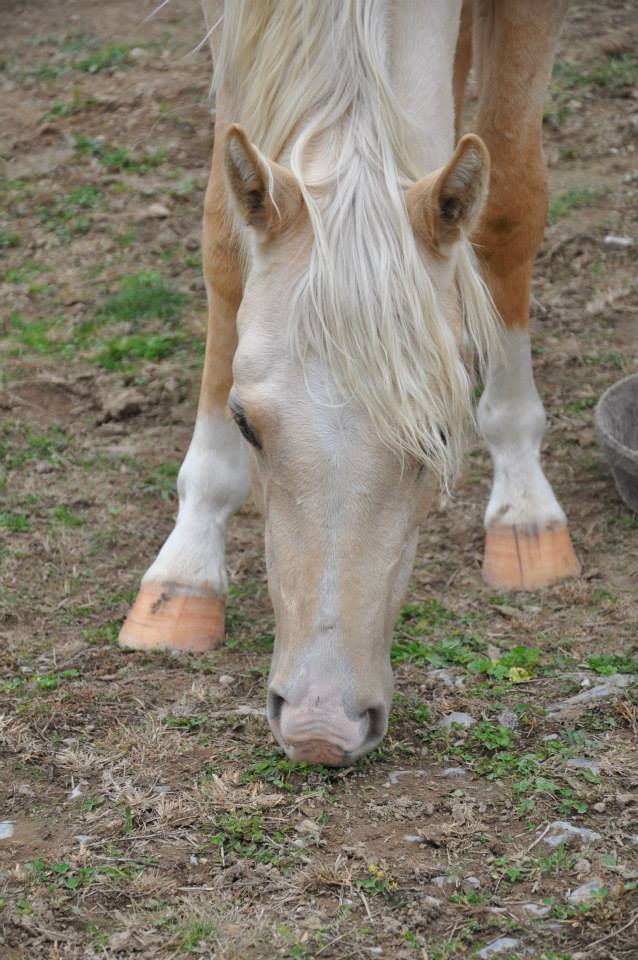 Students who work with the young stock at Smithfield have the opportunity to carry their skills to the Middleburg MARE Center for a summer internship or a semester-long Equine Studies Program in the fall and spring. Furthermore, they can hone their riding skills in one of Virginia’s Techs equestrian clubs and courses or participate on the college’s horse judging team to advance their knowledge.
Students who work with the young stock at Smithfield have the opportunity to carry their skills to the Middleburg MARE Center for a summer internship or a semester-long Equine Studies Program in the fall and spring. Furthermore, they can hone their riding skills in one of Virginia’s Techs equestrian clubs and courses or participate on the college’s horse judging team to advance their knowledge.
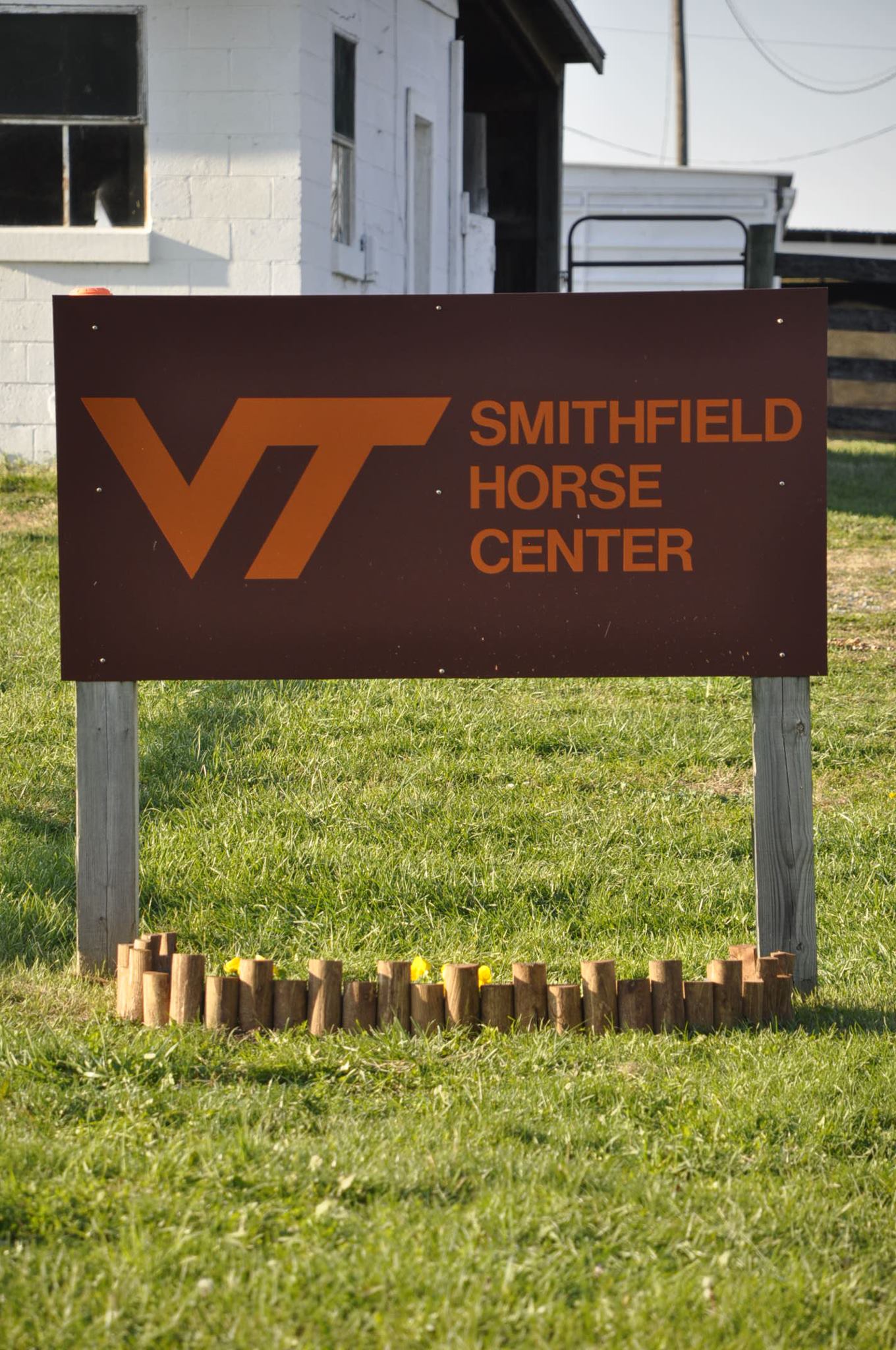 Like many offerings from the Virginia Tech College of Agriculture, the undergraduate Animal Science program prides itself on providing a hands-on approach that relies on real-world experience and practice. For students seeking a career in the horse industry, which has an economic impact of $1.2 billion in Virginia alone, this recipe for success relies upon good facilities, passionate teachers, and animals that represent the current industry. Smithfield Horse Center, with its dedicated faculty, manager, and volunteers, certainly fits the bill.
Like many offerings from the Virginia Tech College of Agriculture, the undergraduate Animal Science program prides itself on providing a hands-on approach that relies on real-world experience and practice. For students seeking a career in the horse industry, which has an economic impact of $1.2 billion in Virginia alone, this recipe for success relies upon good facilities, passionate teachers, and animals that represent the current industry. Smithfield Horse Center, with its dedicated faculty, manager, and volunteers, certainly fits the bill.
Special thanks to Christine Thomas Photography for providing the photos for this story. Christine has been part of the farm staff at Smithfield for several years and will be graduating with a degree in agribusiness management this spring.
Additional Resources for Readers:
Extension Resources and Publications about Horse Care and Management

